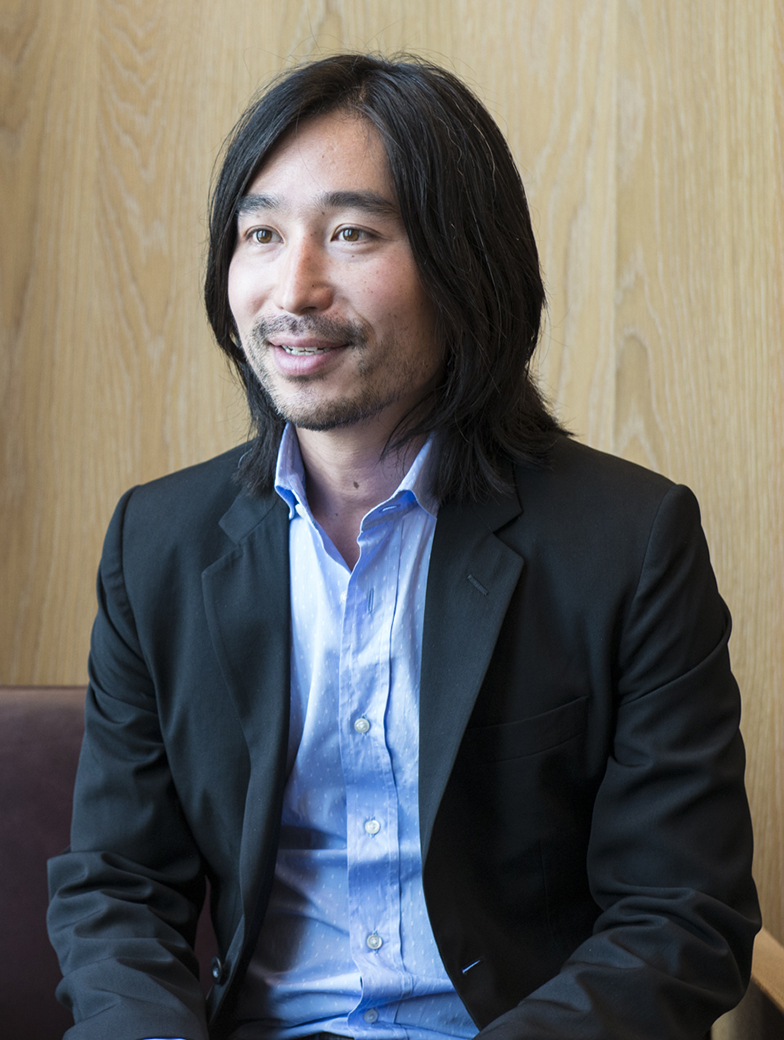Note: This website was automatically translated, so some terms or nuances may not be completely accurate.
"Breathing Life into Computer Graphics Animation" Hidetaka Shikaku

Hidetaka Shikaku
We spoke with internationally renowned computer graphics creator Hidetaka Shikaku about the appeal of the animated film "The Little Prince: The Little Prince and Me," for which he served as character supervisor, and the challenges he faced in realizing his childhood dream of working in the world of animation.
Infusing CG with warmth through delicate expressions and natural movement
The animated film "The Little Prince: The Little Prince and Me" (distributed by Warner Bros.), for which I served as character supervisor, will be released in Japan starting this November. It depicts the aftermath of the world-renowned classic "The Little Prince," featuring a 9-year-old girl and an elderly pilot as its protagonists. The director is Mark Osborne, who took the animated film world by storm with "Kung Fu Panda" (2008). Though called character supervision, my job involves developing the entire system to animate the characters from scratch. I bridge art and technology to bring the director and art director's vision to life—from full-body movements to subtle facial expressions—ensuring the computer-generated (CG) characters move exactly as intended. It's like the role of Geppetto, who breathes life into Pinocchio.
This film was a huge challenge for me. One major challenge was that this is a film that draws audiences in and shares emotions through the appeal of its CG characters. It's not a musical, nor does it rely on gags or flashy action. If the CG characters couldn't truly act, the film simply wouldn't work. That's incredibly difficult. Why? Because CG characters are clean, polished—you can't see the human hand that crafted them. They can feel a bit inorganic. Yet, we had to make them warm and relatable characters that could capture human hearts.

This time, to create natural expressions, we focused especially on the characters' eyes. Even without dialogue, we aimed for emotions to be conveyed through subtle expressions like pupil dilation and blinking. Furthermore, by meticulously adjusting the balance between the left and right sides of the face – making it slightly asymmetrical, just like a real human – we built up layers of detail. This process gradually shaped the characters into compelling, lifelike beings with a palpable warmth.
Another challenge was merging the two distinct techniques defining this film. Director Osborne took on what seemed a reckless challenge: using stop-motion animation—where each puppet is moved frame by frame—for "The Little Prince's World," while rendering the "real world" where the girl appears in CG. Naturally, transitions between techniques risked creating jarring discontinuities. To resolve this, we employed various techniques: adjusting color tones, using the pages of the book the girl reads as a transitional medium, and more. We meticulously repeated the process—reworking and checking for even the slightest inconsistency, then revisiting and refining if still imperfect—until the two worlds were seamlessly integrated.




©2015 LPPTV - LITTLE PRINCESS - ON ENT - ORANGE STUDIO - M6 FILMS - LUCKY RED
http://wwws.warnerbros.co.jp/littleprince/
Continuing to seek new challenges and forging my own path
Looking back, major challenges have always been turning points, shaping who I am today. As a third-year student at Kobe University studying hardware, I experienced the Great Hanshin-Awaji Earthquake. While volunteering in the disaster area, I became close with an unemployed middle-aged man. When I consulted him about life and the future, he said, "Find what you love while you're still young, and keep doing it." Those words struck deep within me.
Around that time, I saw the CG animated film "Toy Story" and was drawn to its possibilities. I felt that studying CG could lead me to work on the animated films I admired, but I was struggling with realistic career paths. His words gave me the push I needed. I withdrew all the applications I had already sent to several companies, stopped job hunting, and decided to study CG in graduate school to make my living in that world.
After graduating, I joined Square Enix, the company behind the immensely popular "Final Fantasy" game series, renowned for its visual beauty. Creating high-end visuals like opening movies for games became increasingly fascinating, fueling a growing desire to work on longer, feature-length projects. But at that time, CG films were scarcely made in Japan. There was no choice but to go overseas. I moved to the US alone, with no job lined up. It was a challenge at age 30.
After several jobs, I joined Disney. My biggest challenge there was achieving the visual expression for Rapunzel's hair in "Tangled," set at 22 meters, to move naturally. I was anxious about whether I could pull it off. Back then, in CG animation, hair was considered an afterthought; the character's performance and the hair's movement were treated as completely separate. But in this film, the hair itself was a crucial part of the story. I solved it by building software that allowed Rapunzel herself and her hair to interact naturally. And just as I was starting to wonder what to challenge next, I met Director Osborne.
The roots of my inspiration lie in Japanese animation. Someday, I want to create a work together.
My childhood love for animation began with "Future Boy Conan." I later learned Hayao Miyazaki was the animation director. I remember being profoundly moved the first time I saw Miyazaki's "Nausicaä of the Valley of the Wind." I was completely captivated by the overwhelming quality—the grand worldview where fantasy and reality intertwine, the beautiful depictions of nature and cityscapes, and the characters' natural, human-like movements—and I started watching all his works. Most animation creators, both in Japan and abroad, deeply respect Director Miyazaki, and I feel I've also been greatly influenced by his techniques, such as expressing emotions through the subtle movements of the mouth and eyes.
In Japan, handcrafted, meticulously animated 2D animation, spearheaded by Director Miyazaki, remains the mainstream. It has reached a level of perfection and is highly acclaimed worldwide. Japan boasts many talented creators following in Director Miyazaki's footsteps. I hope to one day take on the challenge in Japan of creating works that fuse this Japanese animation tradition with the CG animation that is mainstream overseas.
Was this article helpful?
Newsletter registration is here
We select and publish important news every day
For inquiries about this article
Author

Hidetaka Shikaku
Computer Graphics Creator
Born in 1972. After graduating from Kobe University's Faculty of Engineering, he earned a master's degree in computer science from Nara Institute of Science and Technology. Following roles as a software engineer at Square Enix and in London, UK, he joined Disney. He served as Character Technical Supervisor on films including "Bolt" (2008) and "Tangled" (2011). Left Disney in 2013 to work on "The Little Prince." Currently resides in Spain.